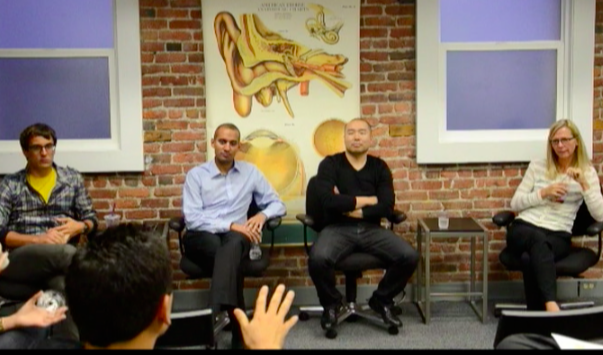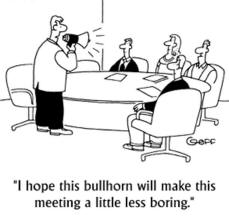Tying the knot with your board & advisors
I, startup founder, take you, investor, for my Board of Directors,
to have and to hold,
from this day forward, for better,
for worse, for richer, for poorer,
in growth and in recession, until series B or C do us part.
The relationships formed between a founder and board members or advisors can sometimes feel like a marriage. Last night, Rock Health startups asked Linda Avey, co-founder of 23andMe, Jae Chung, founder/CEO of goBalto, Jeff Hammerbacher, co-founder of Cloudera and Abhas Gupta of Mohr Davidow how to find that that perfect match. So how do you ask them on the first date, pop the question and keep them committed? Stay tuned below.
Board member characteristics
As with looking for a partner, every company has certain characteristics they look for in board members or advisors. On the other hand, building a board is certainty not a monogamous activity. Instead, you form multiple relationships with people that will fit different needs of the company. When choosing, it is critical to define the roles each member will play. Here are a few types:
- The Good-Looker: this type of advisor or board member has fame and credibility to lend you. They may be listed on your website but not appear at your meetings, which is sometimes not all bad.
- The Social Butterfly: this one will have a great network in your specific field and be able to make the proper introductions.
- The Skeptic Turned Believer: someone who will spread the word about your idea to their network. They have a special type of passion because you convinced them of the benefits when they had doubts.
- The Scientific or Tech Expert: these folks can do anything from give advice, provide creditability, help review research and even do research.
- The Committed: Someone who is invested not only with their money but also to the cause. They want to be a change maker and feel that your company is part of the solution. This could also be a person who sees benefit in helping out with work.
- The Smile and Nodder: a board member that will back your decision when it comes to the big choices but not add much other value.
- The Observer: an investor who wants be on the board but is happy to sit in to see what is going on and not vote. This allows you to hold the seats close to you but also make the investor happy.
But what it really comes down to is that undeniable spark of chemistry. Each person needs to be someone you will be happy to work with in the good times, and the bad for many years to come. So how does this process break down in practice?
The first date
One startup asked, can you send a cold email to a dream advisor and tell them you’d like them on the team? This is like telling someone on blind date that you’re on the prowl for marriage material. It is crucial that you get to know the potential board member or advisor face to face first and talk about the company. Explore whether or not your values align and if you actually get along. It will take more than a few dates to be sure.
Popping the question
Hold out as long as possible for those members that are the right fit. A seat on your board of directors is a long term commitment and valuable bargaining tool, so you want to be absolutely positive when you make your decision. Yes, some of these seats come in the form of an arranged marriage due to investments, but you still want to make sure they are a good fit.
When you do ask, be completely open and honest about the terms. For example, if you give a lead investor a seat on the board, clarify whether they will continue to sit on the board if you raise another round. In addition, outline the compensation clearly. Identify shares, percentage, or payment they expect. Don’t be surprised if some advisors just want to be a part of it free of cost.
What encourages their acceptance of the proposal? Social proof, incentives such as synergies of companies, or just seeing the potential in the company and wanting to be part of it early. Exhibit these factors when proposing to seal the deal.
Keeping them committed
Just as any marriage takes work, so to does making your advisors and board feel useful, connected and loved. Linda shared that 23andMe had the board all use the product, then share their thoughts at a meeting. Jae created a wiki page for their board members where they give updates, make comments and share resources between sessions. This allows for real time feedback and the ability to engage as much as they like. Read more here.
Other tips:
- Do not rely on your board members or advisors to do the heavy lifting. At the end of the day, you have to build something useful to keep their interest and make a successful business.
- Put the board member’s name in the contract instead of company they represent to ensure that you can select a new board member if that person leaves the investment company.
Want more? Check out the talk here.


